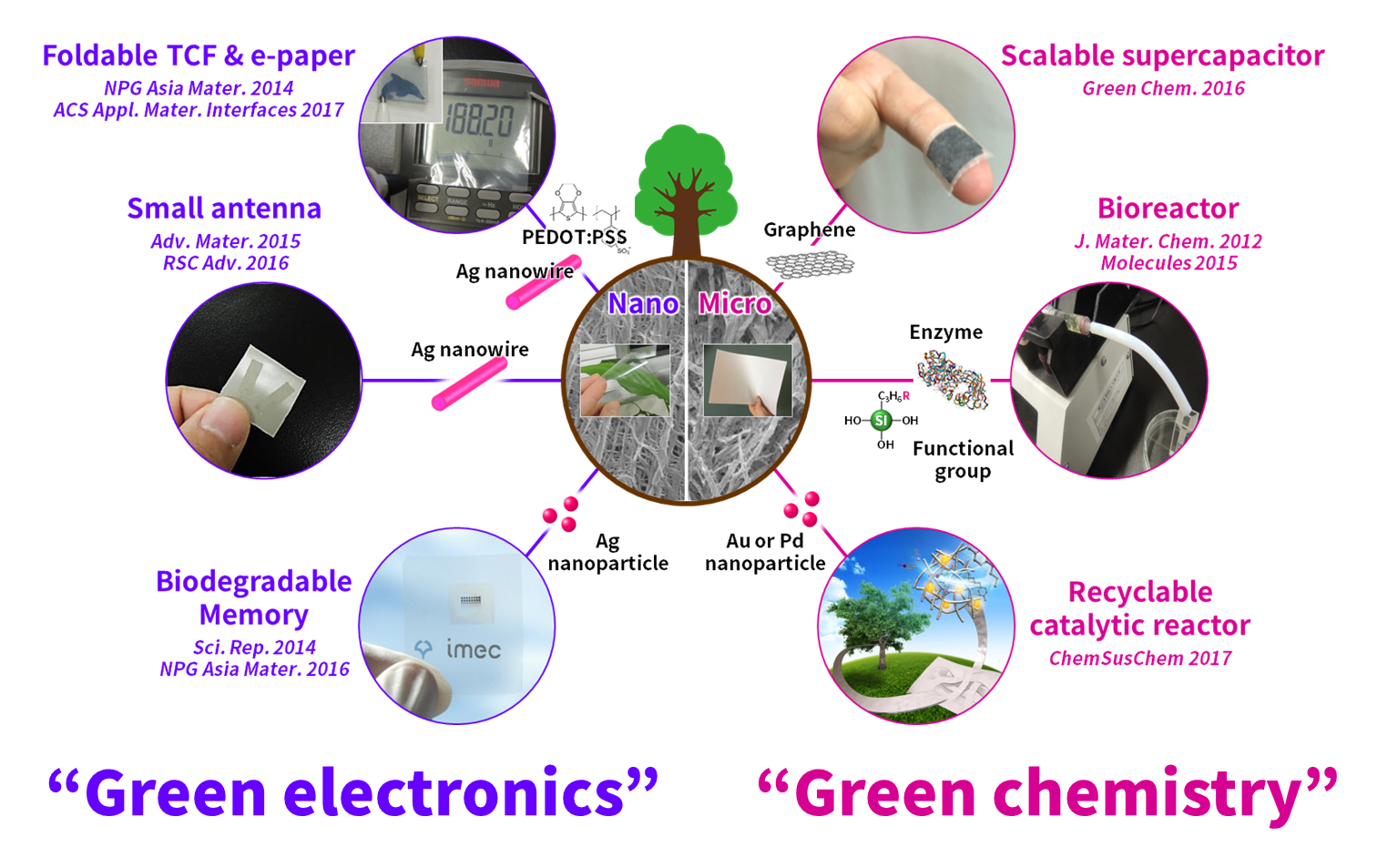English
Research Introduction
Wood-derived cellulose is the most abundant and renewable bioresources. Among many cellulosic materials, paper is the most common one. Since the invention of paper approximately 2000 years ago, it has been traditionally used on a daily basis for various purposes such as writing, printing, wiping, and packaging applications. The recent trend toward green and sustainable technology has led to a growing emphasis on the development of new functionalized paper materials to extend their use in advanced applications.
We aim at functional innovation of cellulose paper by structural, molecular, and material design, i.e., compositing of metal or carbon nanomaterials, chemical modification, control of porous structures from micro to nanoscale, and their combination. This “renovation of paper” strategy opens new doors for the development of advanced functional paper materials to realize green electronics and chemistry.

